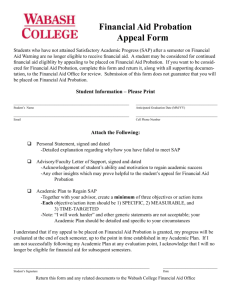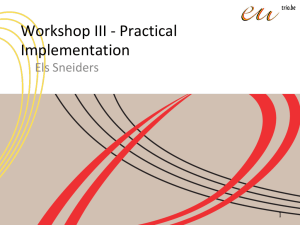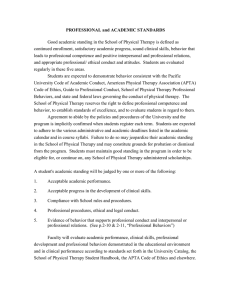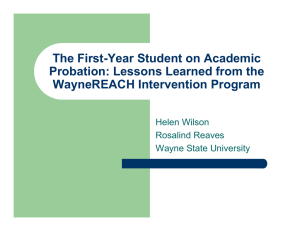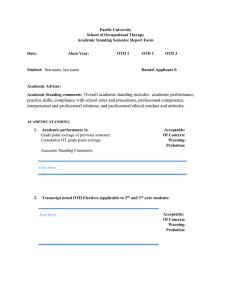Probation & Community Corrections Answer Key
advertisement
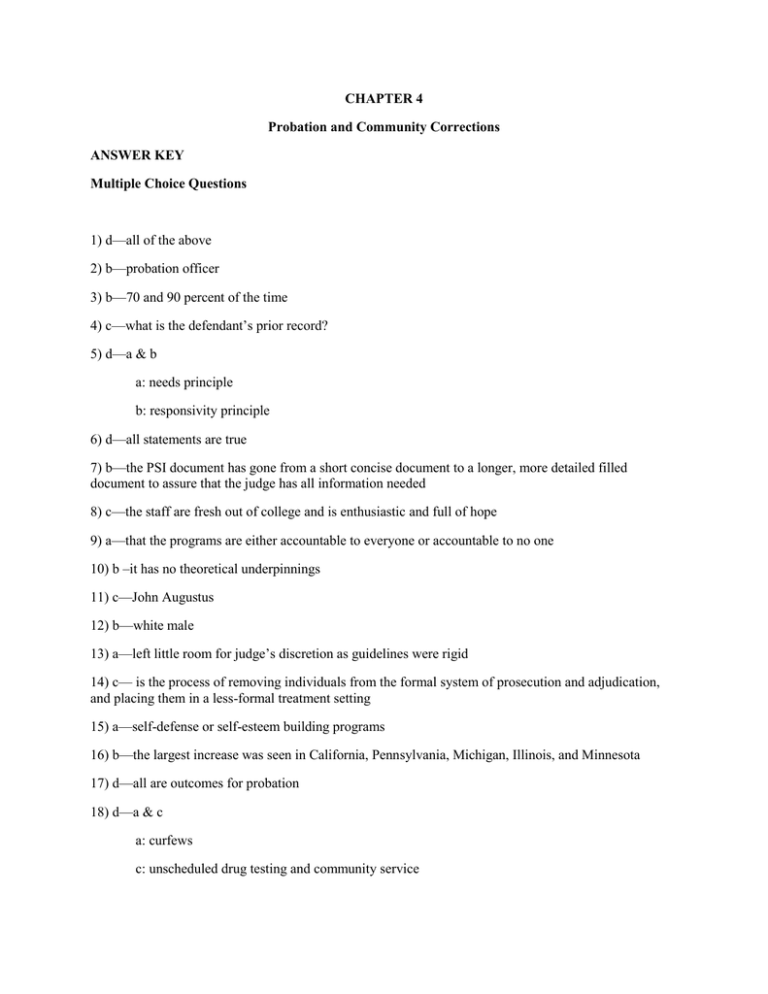
CHAPTER 4 Probation and Community Corrections ANSWER KEY Multiple Choice Questions 1) d—all of the above 2) b—probation officer 3) b—70 and 90 percent of the time 4) c—what is the defendant’s prior record? 5) d—a & b a: needs principle b: responsivity principle 6) d—all statements are true 7) b—the PSI document has gone from a short concise document to a longer, more detailed filled document to assure that the judge has all information needed 8) c—the staff are fresh out of college and is enthusiastic and full of hope 9) a—that the programs are either accountable to everyone or accountable to no one 10) b –it has no theoretical underpinnings 11) c—John Augustus 12) b—white male 13) a—left little room for judge’s discretion as guidelines were rigid 14) c— is the process of removing individuals from the formal system of prosecution and adjudication, and placing them in a less-formal treatment setting 15) a—self-defense or self-esteem building programs 16) b—the largest increase was seen in California, Pennsylvania, Michigan, Illinois, and Minnesota 17) d—all are outcomes for probation 18) d—a & c a: curfews c: unscheduled drug testing and community service 19) b—evidence that would not normally find its way into a criminal case, including hearsay evidence is often used in revocation hearings 20) d—it is important to suspend proceedings before society labels the offender as a delinquent or criminal, so the negative effects of the label can be prevented 21) a—retribution 22) b—to secure benefits for the community and for the offender as well 23) b—they are sworn peace officers with full arrest powers 24) d—all of the above 25) d—a & c a: allowed the courts to suspend the imposition of sentences for prisoners destined for a British colony c: to encourage good behavior 26) a—New York is the only jurisdiction that places control of probation with the local executive and state executive 27) d—there are costs to the community who offer supervision 28) b—Maximum supervision is for offenders who pose significant public safety threat and have a history of serious crime 29) c—it refers to the amount of time needed to complete various tasks associated with supervising one’s clients 30) a—that the intensive programs had less rules which may explain the higher rate of reoffending True/False Statements 1) T 2) F 3) T 4) F 5) T 6) F 7) T 8) T 9) F 10) T 11) F 12) T 13) T 14) F 15) F 16) F 17) T 18) T 19) F 20) F Fill in the Blanks 1) judicial reprieve 2) presentence investigation 3) sursis 4) extrainstitutional punishment 5) asset forfeiture 6) house arrest 7) surveillance officers 8) program costs 9) community corrections 10) restitution 11) electronic monitoring 12) community service 13) intermediate sanctions 14) diversion programs 15) cost effective 16) incarceration 17) delinquent or criminal 18) The Salvation Army Probation Department 19) United States v. Birnbaum 20) revocation Matching 1) D 2) H 3) A 4) B 5) G 6) I 7) E 8) J 9) C 10) F

